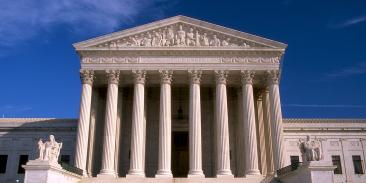New Environmental Defense Fund Report Urges New York City to Take Unified Approach to Housing and Climate Crisis to Protect Communities from Future Displacement
Environmental Defense Fund and Partners call for a flood resilient land use framework to align housing, infrastructure, and climate goals
New York, NY – As New York City faces mounting housing unaffordability and escalating flood risks, a new report from Environmental Defense Fund (EDF), Regional Plan Association (RPA), Association for Neighborhood and Housing Development (ANHD), and Cornell University warns that without urgent action, tens of thousands of New Yorkers could lose their homes to rising seas and extreme weather. The report’s release comes just a week after New York City experienced a severe rainstorm that claimed two lives, after two inches of rain fell in Brooklyn and Queens in a matter of hours.
The report, Policy Solutions for the Climate and Housing Crisis in New York City: Safe Housing for Ensuring Long Term Resilience (SHELTR), finds that over 19,000 homes, representing more than 40,000 residents, are at risk of being lost to coastal flooding by 2040, a number that could triple by 2070 if current trends continue. Meanwhile, more than half of New Yorkers are rent-burdened, with low income and communities of color disproportionately at risk from both flooding and displacement.
“We cannot look at housing and climate as separate crises when the most vulnerable New Yorkers are grappling with climbing rents and climbing tides. Our solutions must rise to meet both,” said Anushi Garg, Senior Analyst for Climate Resilient Coasts and Watersheds at Environmental Defense Fund. “SHELTR provides a roadmap for how the City of New York can tackle these dual crises head-on. With the recent election serving as a referendum on affordability, this is a moment for our incoming leaders in city government to act.”
“New York City is entering a new era in which we have a shared commitment to create affordable housing, but it must be done in a way that addresses the hard realities of ever-more-brutal storms and rising sea levels,” said Rob Freudenberg, Vice President for Energy and Environment, RPA. “This report gives the incoming Administration and Council clear recommendations to ensure our existing and future affordable housing stock meet this moment to protect New Yorkers.”
“New York City is already in the midst of an affordable housing crisis, with thousands facing displacement due to costs, poor conditions, or harassment. Climate change is further threatening our affordable housing stock, and the brunt is once again falling on lower income and often BIPOC communities,” said Emily Goldstein, Director of Organizing and Advocacy at the Association for Neighborhood and Housing Development (ANHD). “We need a more holistic, equity-oriented approach to planning for the future in order to build an affordable and resilient city where we all have a chance to thrive.”
The SHELTR report, developed through close collaboration with a range of local stakeholders, outlines four key policy solutions to make New York’s housing system safer, more equitable, and climate resilient:
- Adopt a comprehensive flood resilient land use framework to increase healthy, safer, and affordable housing development.
- Make the aging and existing housing stock safe and resilient from climate impacts through a one-stop shop for comprehensive retrofit assistance.
- Build community wealth and wellbeing in neighborhoods with low coastal flood risk, where increased populations might put residents at risk of affordability displacement.
- Establish a resilience fund to support the infrastructure we need to adapt.
The report calls on city and state leaders to integrate these recommendations into New York’s citywide housing and adaptation planning and support financing for flood management infrastructure. These changes are necessary if we wish to build a more equitable and resilient New York City.
Read the full report HERE
New York City’s housing and climate crises are increasingly intertwined as severe weather becomes a greater threat. Last week’s storm left homes, roads, and other vital infrastructure flooded, and came nearly 13 years to the day after Superstorm Sandy devastated the tri-state region. In 2021 alone, the Big Apple experienced two 100-year storms, followed by Hurricane Ida. City data showed that 56% of buildings, many of which were located in Queens and Brooklyn, flooded as the 1000-year storm tore through New York City. Much of the impact was on the subspace of buildings, without strong resiliency safeguards in place.
With more than 3 million members, Environmental Defense Fund creates transformational solutions to the most serious environmental problems. To do so, EDF links science, economics, law, and innovative private-sector partnerships to turn solutions into action. edf.org
Latest press releases
-
AGREE, EDF, and Rewiring America Secure Progress Towards Heat Pump-Friendly Electric Rates in Con Edison Rate Case
November 6, 2025 -
New Environmental Defense Fund Report Urges New York City to Take Unified Approach to Housing and Climate Crisis to Protect Communities from Future Displacement
November 6, 2025 -
EDF, Allies File Comments Urging the Trump EPA to Continue the Greenhouse Gas Reporting Program
November 3, 2025 -
Climate Workforce Summit by Ashoka University and EDF Sparks Cross-Sector Collaboration to Accelerate India’s Green Transition
November 1, 2025 -
Cost of Trump Administration’s Mandates to Keep Michigan Coal Plant Open Balloons to $80 Million
October 31, 2025 -
EDF Strengthens Role in Ocean-Climate Governance with New Consultative Status at the IMO’s London Convention and Protocol
October 31, 2025










